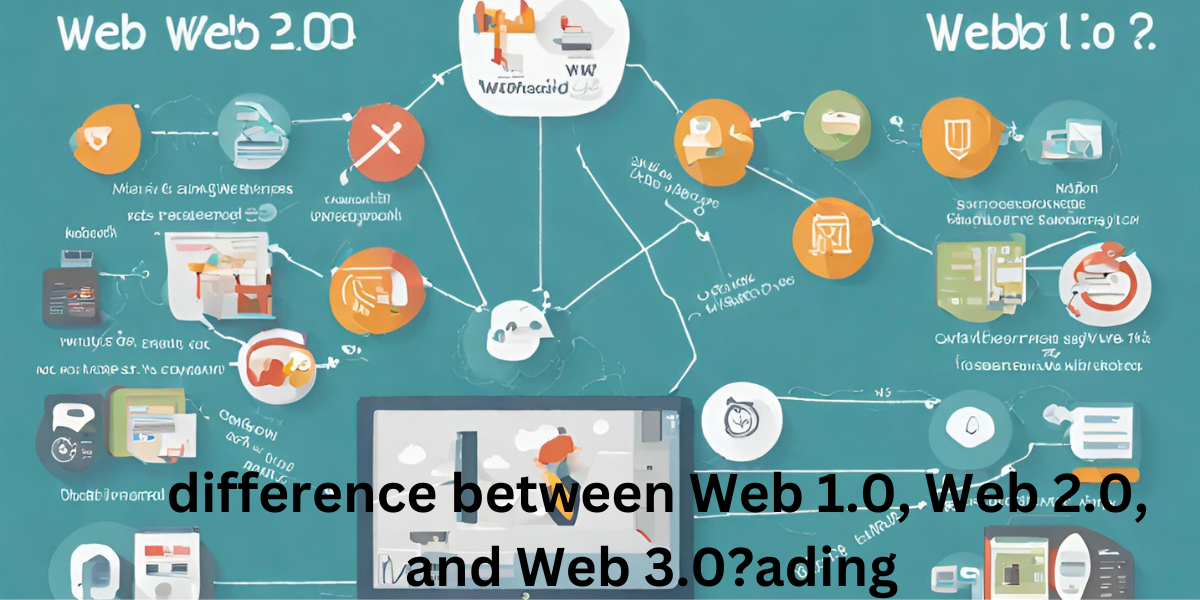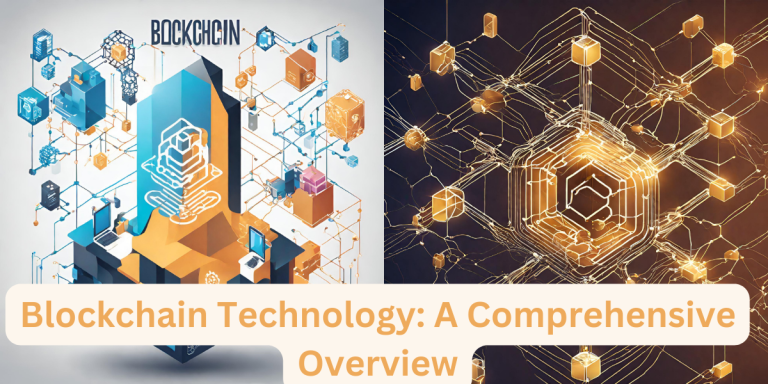What is difference between Web 1.0, Web 2.0, and Web 3.0?
The ever-evolving realm of the World Wide Web, the digital landscape has undergone significant transformations over the years, giving rise to distinct eras known as Web 1.0, Web 2.0, and Web 3.0. These eras have left an indelible mark on the internet, shaping the way we interact with it, the content we consume, and the services we enjoy. In this article, we delve deep into the nuances of these web generations, exploring their defining characteristics, implications, and the technological leaps that have propelled us from one era to the next.
Web 1.0: The Static Web
Web 1.0, often referred to as the “Static Web,” was the foundational phase of the internet. It emerged in the early 1990s and continued until the early 2000s.
During this era, websites were essentially digital brochures. They offered basic, static HTML pages with limited interactivity. Users could read information and view images, but there was minimal user-generated content.
Key features of Web 1.0:
One-Way Communication
- Websites primarily provide information to users.
- Interaction was limited to clicking hyperlinks to access new pages.
Limited User Participation
- Content creation was restricted to web developers and site owners.
- User comments and social interaction were nearly nonexistent.
Slow Internet Speeds
- Dial-up connections were prevalent, leading to slow loading times.
- Multimedia content was rare due to bandwidth constraints.
Web 2.0: The Interactive Web
Web 2.0 marked a paradigm shift in the internet’s evolution. It emerged around the mid-2000s and introduced the concept of user-generated content and interactivity.
Key features of Web 2.0:
User-Generated Content
- Platforms like blogs, social media, and wikis allow users to create and share content.
- Collaboration and content sharing became central.
Interactivity and Engagement
- Websites encourage user participation through comments, likes, and shares.
- The rise of AJAX technology enabled real-time interaction.
Rich Multimedia
- High-speed internet connections enabled the proliferation of multimedia content.
- Video-sharing platforms like YouTube emerged.
Web 3.0: The Semantic Web
Web 3.0, often dubbed the “Semantic Web,” is the current frontier of the internet’s development. While it is still evolving, several trends and technologies define this era.
Key features of Web 3.0:
Intelligent Data and AI
- Web 3.0 leverages artificial intelligence and machine learning for smarter data processing.
- It aims to understand user context and provide more personalized experiences.
Enhanced Interconnectivity
- Semantic web technologies enable better linking of data and concepts.
- Improved search algorithms lead to more relevant results.
Decentralization and Blockchain
- Decentralized technologies, such as blockchain, are shaping the future of web infrastructure.
- Enhanced security and trust in online transactions are primary goals.
What are some examples of Web3 technologies?
Web3 technologies refer to a set of emerging technologies that aim to decentralize the web and enable peer-to-peer interactions. Here are some examples:
- Blockchain is a distributed ledger technology that forms the backbone of Web3 applications, ensuring transparency, security, and immutability.
- Cryptocurrencies: digital currencies like Bitcoin and Ethereum that leverage blockchain technology for secure and decentralized transactions.
- Smart Contracts: self-executing contracts stored on the blockchain, allowing for automated and decentralized agreement enforcement without intermediaries.
- Decentralized Applications (dApps): Applications that run on a peer-to-peer network rather than a central server, facilitating direct user interactions and reducing the need for trust in centralized entities.
- Decentralized Finance (DeFi): financial applications built on blockchain technology, offering services like lending, borrowing, and trading without intermediaries.
- Non-Fungible Tokens (NFTs): unique digital assets represented on the blockchain, enabling provenance and ownership verification for digital art, collectibles, and other unique items.
- InterPlanetary File System (IPFS): a peer-to-peer protocol that enables decentralized and distributed storage of files, creating a more robust and censorship-resistant web.
- Web Assembly (Wasm): A binary instruction format that allows running high-performance code on the web, enabling more complex and efficient applications in the browser.
- Identity and Access Management (IAM) Systems: decentralized systems that enable users to maintain control over their identities and data, preserving privacy and reducing reliance on centralized identity providers.
- Distributed Computing Platforms: Technologies like Holochain and Golem that leverage distributed computing power to enable decentralized and scalable applications
How does Web3 differ from Web2 in terms of privacy and security?
Web3 and Web2 differ significantly in terms of privacy and security. Here’s a comparison:
Privacy in Web 2:
- In Web2, users often surrender their personal data to centralized platforms in exchange for accessing services.
- User data is stored on central servers, making it susceptible to hacks, breaches, and unauthorized access.
- Centralized entities have control over user data, leading to potential privacy abuses, data manipulation, and surveillance.
Privacy in Web 3:
- Web3 aims to give users more control over their data and privacy.
- Personal data is decentralized and stored on a distributed network like a blockchain, where users have ownership and control.
- Users can choose to reveal their identities selectively and maintain pseudonymity, enhancing privacy protection.
- Cryptographic techniques like zero-knowledge proofs can enable private transactions and computations.
Security in Web 2:
- Web2 platforms are vulnerable to centralized attacks as they rely on a single point of failure.
- Data breaches and hacks can lead to substantial damage, identity theft, and unauthorized access to user accounts.
- Users have to trust centralized authorities to protect their data and ensure secure transactions.
Security in Web3:
- Web3 utilizes decentralized architectures that distribute data and processing across multiple nodes, reducing the risk of single points of failure.
- Blockchain technology, with its consensus algorithms and cryptographic mechanisms, provides enhanced security and integrity.
- Smart contracts enforce predefined rules, eliminating the need for trust in intermediaries for transactions.
- Public-key cryptography and digital signatures enhance the security of user identities and authentication.
Overall, Web3 aims to empower users with greater privacy and security by leveraging decentralized technologies and allowing users to have more control over their personal data.
What are the benefits of using Web3 technologies?
Web3 technologies offer several benefits that make them highly advantageous in various industries. One of the key advantages is their decentralized nature, which eliminates the need for intermediaries and fosters trust and transparency in transactions. By leveraging blockchain technology, Web3 enables secure and tamper-proof data storage and sharing, ensuring the integrity and immutability of information.
Another benefit of Web3 technologies is their potential to revolutionize the financial sector. Through the use of smart contracts, Web3 platforms enable the automation of complex financial processes, such as lending, insurance, and asset management. This automation not only reduces costs but also minimizes the risk of human error and fraud.
Moreover, Web3 technologies empower individuals to have full control over their digital identities and personal data. With decentralized identity solutions, users can manage and share their personal information securely without relying on centralized entities. This not only enhances privacy but also gives individuals the ability to monetize their data directly, if they choose to do so.
Additionally, Web3 technologies have the potential to democratize access to various services and opportunities. By removing barriers such as geographical boundaries and intermediaries, Web3 platforms enable individuals from all around the world to participate in global markets, access financial services, and engage in peer-to-peer transactions. This inclusivity has the potential to empower underserved populations and drive economic growth.
Furthermore, Web3 technologies promote innovation through open-source collaboration and interoperability. Developers can build decentralized applications (dApps) on Web3 platforms, leveraging existing infrastructure and standards. This fosters a vibrant ecosystem where ideas can be shared, tested, and improved upon, ultimately driving technological advancements. The benefits of using Web3 technologies are numerous and far-reaching. From decentralization and automation to enhanced privacy and inclusivity, Web3 has the potential to transform industries and empower individuals in unprecedented ways. As these technologies continue to evolve, we can expect even more innovative use cases and opportunities for growth.
How can Web3 impact industries such as finance and healthcare?
The emergence of Web3 technology has the potential to revolutionize industries across the board, including finance and healthcare. With its decentralized nature, Web3 can provide a more secure and transparent platform for financial transactions and data sharing in the healthcare sector.
In finance, Web3 can enable peer-to-peer transactions without the need for intermediaries such as banks. This can lead to faster and cheaper transactions, as well as greater financial inclusion for those who may not have access to traditional banking services. Additionally, the use of blockchain technology can enhance security and reduce the risk of fraud in financial transactions.
In healthcare, Web3 can facilitate secure and efficient sharing of patient data between healthcare providers, as well as between patients and their providers. This can lead to improved patient outcomes, as healthcare providers will have access to more comprehensive and up-to-date information about their patients. Moreover, the use of blockchain technology can enhance the security and privacy of patient data, which is critical in the healthcare industry.
Overall, the impact of Web3 on industries such as finance and healthcare is likely to be significant. Its decentralized nature and use of blockchain technology can lead to more secure, transparent, and efficient systems that benefit both individuals and organizations. As such, it is important for businesses and policymakers to stay abreast of these developments and explore ways to leverage Web3 technology for their respective industries.
The Evolution Continues
The transition from Web 1.0 to Web 3.0 is a testament to the dynamic nature of the internet. Each era has brought about profound changes in how we connect, share, and access information. As we stand on the cusp of Web 3.0, the possibilities seem limitless. With advancements like the Internet of Things (IoT), augmented reality (AR), and virtual reality (VR), the future promises even greater connectivity and immersion.
In conclusion, Web 1.0, Web 2.0, and Web 3.0 represent distinct phases in the ongoing evolution of the internet. From static web pages to interactive platforms and now to the semantic web, each era has pushed the boundaries of what is possible online. The journey continues, and as we navigate the ever-changing digital landscape, one thing remains certain: the internet will continue to shape our world in ways we can only begin to imagine.
FAQs (Frequently Asked Questions)
Q: How did Web 1.0 impact businesses? Web 1.0 laid the foundation for online presence, allowing businesses to showcase their products and services globally.
Q: What’s the role of Web 2.0 in social activism? Web 2.0 empowered individuals and groups to raise awareness and mobilize support for social causes.
Q: Can you provide an example of Web 3.0 in action? Sure! Consider voice assistants like Siri and Alexa; they represent Web 3.0’s integration of AI into everyday life.
Q: Is Web 3.0 the final stage of the internet’s evolution? Web 3.0 is the latest phase we know of, but the internet is ever-evolving, so who knows what the future holds?
Q: How can I adapt to the changes brought by Web 3.0? Stay curious, keep learning about emerging technologies, and embrace the opportunities they offer.
Q: What’s the future of the internet? The internet’s future is exciting, with possibilities like virtual reality, decentralized networks, and even Web 4.0 on the horizon.
In this digital journey through Web 1.0, Web 2.0, and Web 3.0, we’ve witnessed the internet’s remarkable evolution. From static web pages to intelligent systems, each phase has left an indelible mark on our online experiences. As we look to the future, we can only anticipate more innovation and transformation in the world of the web.


